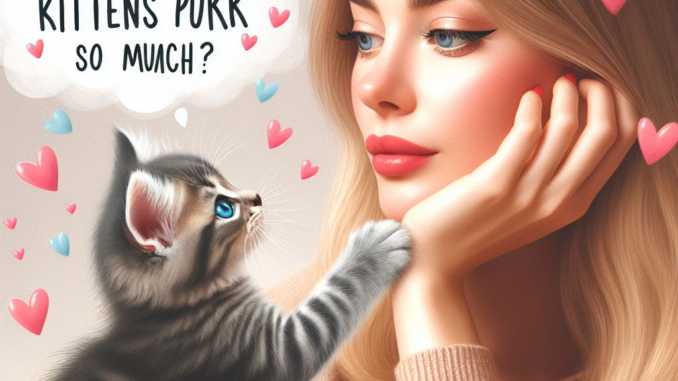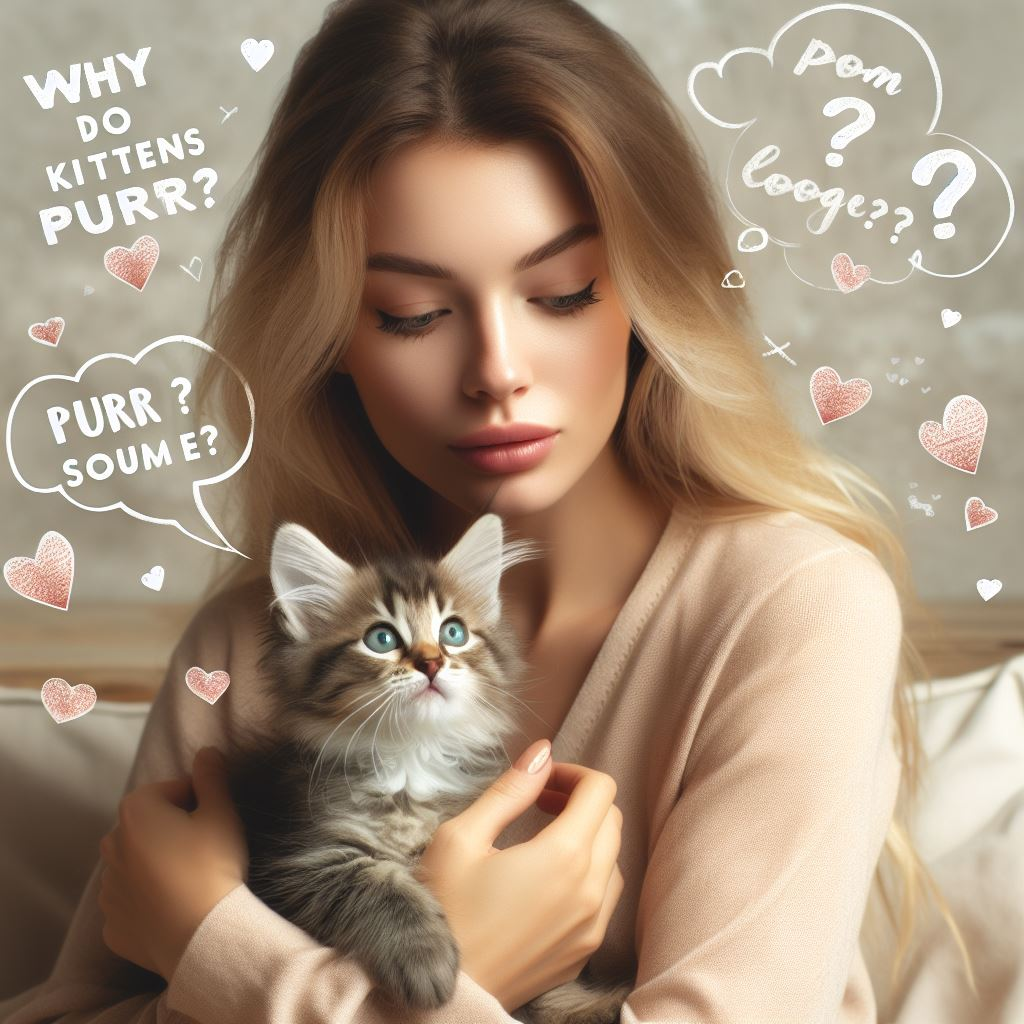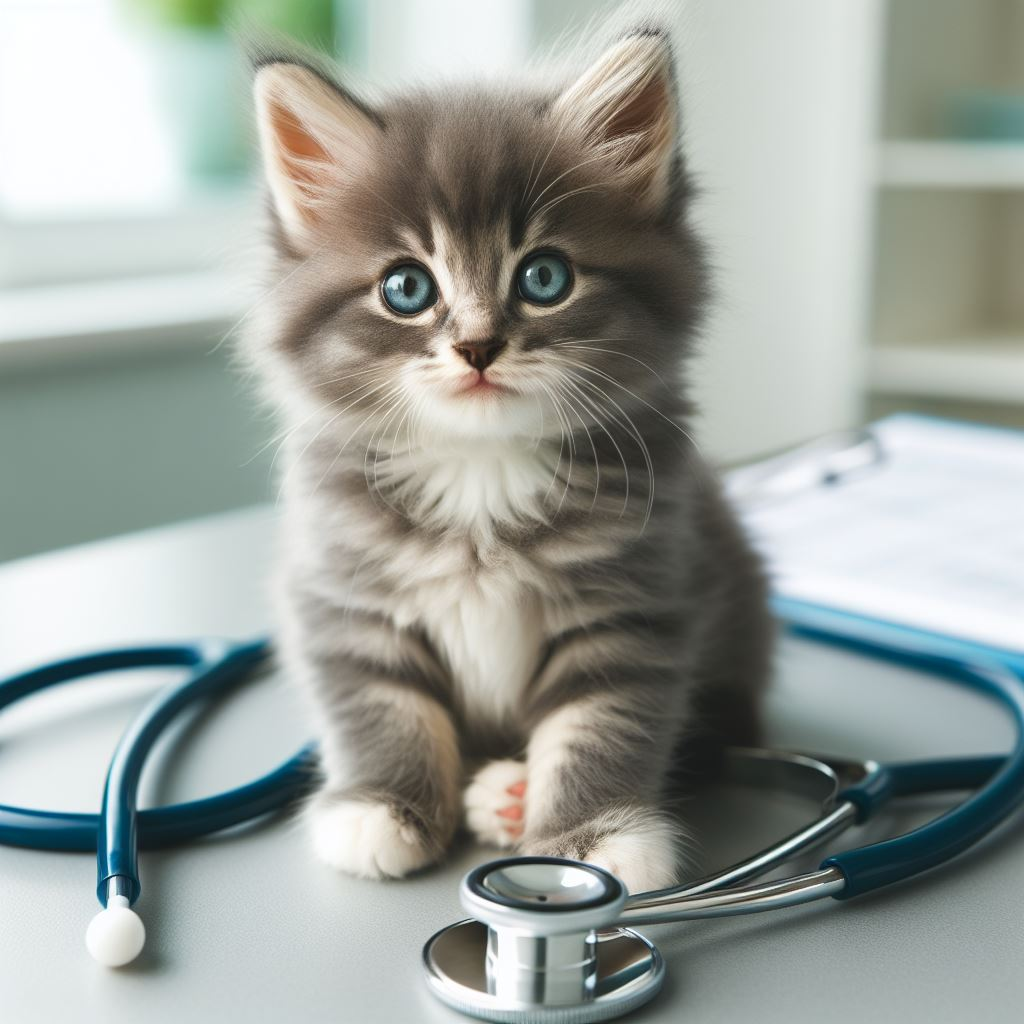
Why Do Kittens Purr So Much?
If you’ve ever cuddled a kitten, you know that purring is like their native language – they do it all the time! As soon as you pick them up, it’s like turning on a little furry motor that vibrates with soothing sounds. But why exactly do kittens purr so frequently? What’s behind these cute, rumbly noises? Well, friends, let’s unravel this purr-plexing mystery together!
Purring Starts Early in a Kitten’s Life

Get this – kittens learn to purr incredibly young, starting as early as 3 weeks old! I know, how crazy is that? These teeny tiny furballs don’t have their eyes fully open yet, still wobbly on their little legs, but purring already comes naturally to them. Experts believe purring is one of the first ways kittens learn to communicate with their mama cat and littermates. It’s like their way of saying, “I’m happy and safe here with you guys!” or “Can I have some milk, please?” Even if they can’t see clearly or walk properly yet, purring helps them bond during feeding and snuggling time.
My friend Jess has a new litter of foster kittens who are about 4 weeks old now. The other day, she sent me the most adorable video of the kittens crawling all over her while purring loudly as she bottle-fed them. Their eyes were still half-shut but they were purring up a storm! It was the cutest thing I’ve ever seen!
Those Purrs Can Mean Different Things
Now just because a kitten is purring, it doesn’t always mean they’re happy or content. I know, plot twist! Purrs can actually communicate all kinds of different needs and moods. You gotta listen closely to decode them.
For example, my cat Mittens has a certain kind of long, drawn-out purr when he’s hungry and wants his wet food. He’ll wrap around my leg, purring up a storm while giving me big ol’ begging eyes. Hard to resist, I tell ya! Then he’s got his nice rumbly purr when he’s chilling in my lap, getting ear scratches. Totally different vibe.
Some other purr scenarios:
- Gimme attention purr – A distinctive high-pitched cry, like “Hellooo, I exist over here!”
- Stressed out purr – Trying to self-soothe when scared or nervous.
- Ouchie purr – Yes, kittens purr when injured or in pain, too. It seems to help their healing process.
So, you see, kittens have a whole range of “purr-sonalities”!
From Wobbly Newborn to Zoomie Machine
To really get why kittens purr so much, we should look at how quickly they change and grow in their first few months of life. It’s a pretty wild ride! Let me break it down:
- 1-3 weeks – Just squinty-eyed lil noodles discovering the world through their remaining senses.
- 3-5 weeks – Eyes open fully, trying out walking, mega curious!
- 6-8 weeks – Major social development phase. Learning from Mama and siblings.
- 9-12 weeks – Transitioning to solid food and becoming pros at this whole being a cat thing.
So, in just about 12 weeks, they go from completely helpless furry jellybeans to confident, coordinated kittens ready to conquer the world! And purring is with them every step of the way, helping them connect, explore, and communicate during this rapid growth.
Once kittens hit that zoomie stage a few months in, you’ll hear them purring with joy when they run and play. Or purring to get your attention when it’s snack time. Regardless, those little rumbly sounds keep coming!
A Natural Kitten Healing Method
Get this – studies show that the frequencies in a kitten’s purr can actually help their bones and tissues heal faster. How amazing is that? It’s like their own natural recovery method, both soothing pain and speeding up the healing process. No wonder they purr when injured or sick! Next time you hear a kitten purring through discomfort, know that the sound is likely helping them recuperate.
Some research also indicates that kitten and cat purrs release healing vibrations that are healthy for us humans to be around too. So snuggling a purring kitten doesn’t just feel emotionally comforting; it could provide physical benefits, too! Now, that’s a prescription I can get behind.
From Purring Kitten to Purring Cat
As kittens grow into adult cats, their purr communication skills become more advanced. They learn to use purring to convey an even wider range of feelings and needs. An adult cat might have a unique purr that clearly says “Feed me now, servant!” or “Pet me please, I command it!” They even develop manipulative purrs, designed to get exactly what they want from their human companions. Tricky tricksters!
A cat’s patterns of purring can also serve as indicators of their health. Sudden changes or alterations may signify the cat is unwell or emotionally unbalanced in some way. So, it’s important for cat owners to tune into the nuances of their pet’s purrs over their lifetime. The more you know your cat’s purr language, the better you can address changes and provide care when required.
Why Do Only Cats Purr?
Now you may be wondering – if purring is so great, why don’t other animals do it? Well, the mechanism for purring requires a unique combination of feline anatomy – a supple hyoid bone and neural oscillator in the brain. It works differently than an animal’s larynx built for barking, roaring, or howling. Most big wild cats, like lions, use their larynx just for dramatic roars, not purrs. So really it’s mostly limited to smaller felines like domestic cats, bobcats, etc. Though I’m trying to teach my golden retriever to purr…we’ll see how it goes.
Become Fluent in Purrs
At the end of the day, no two kittens or cats purr exactly the same way. As their parent/roommate/servant, it’s your job to study your furry friend’s purrs closely – take note of different tones, pitches, contexts. You’ll pick up on the unique language of their purrs and meows. This will allow you to better tend to their needs and deepen your bond.
So in short – listen closely, decode those cute rumbly purrs, and let your kitten’s natural communication skills guide your caregiving. They have a lot to say…if you just tune your ears to their frequency.


Leave a Reply